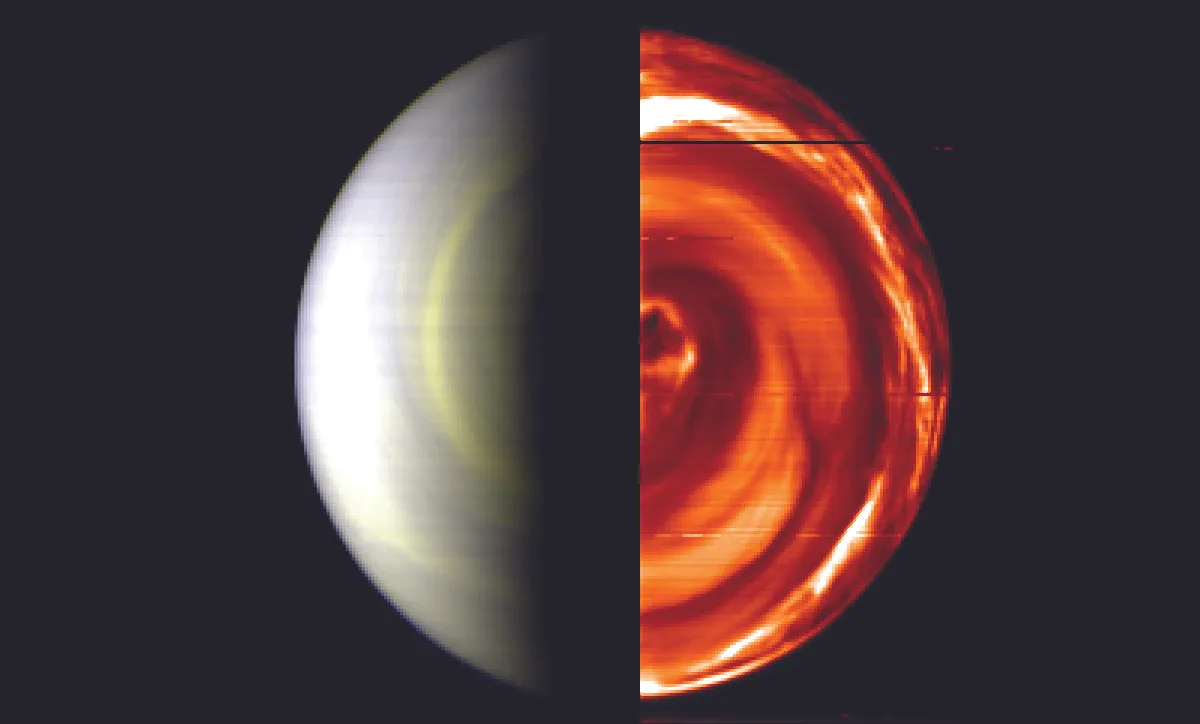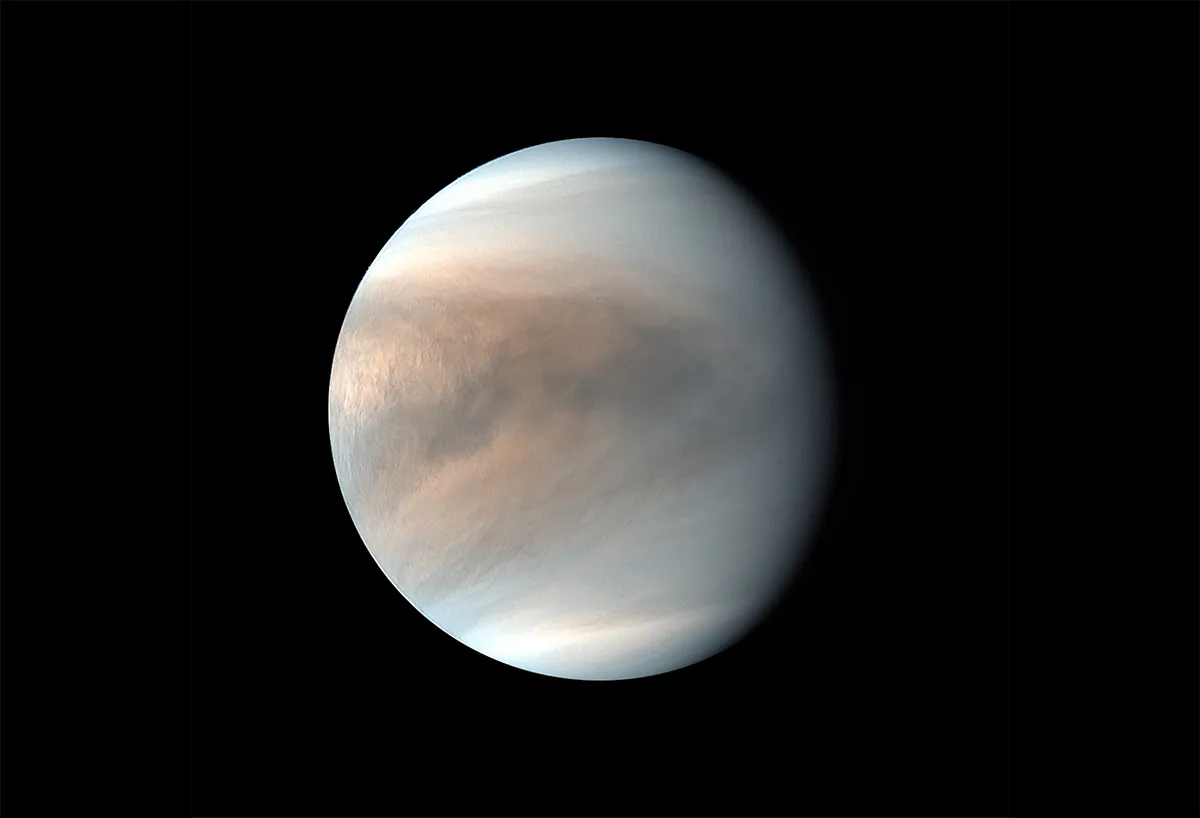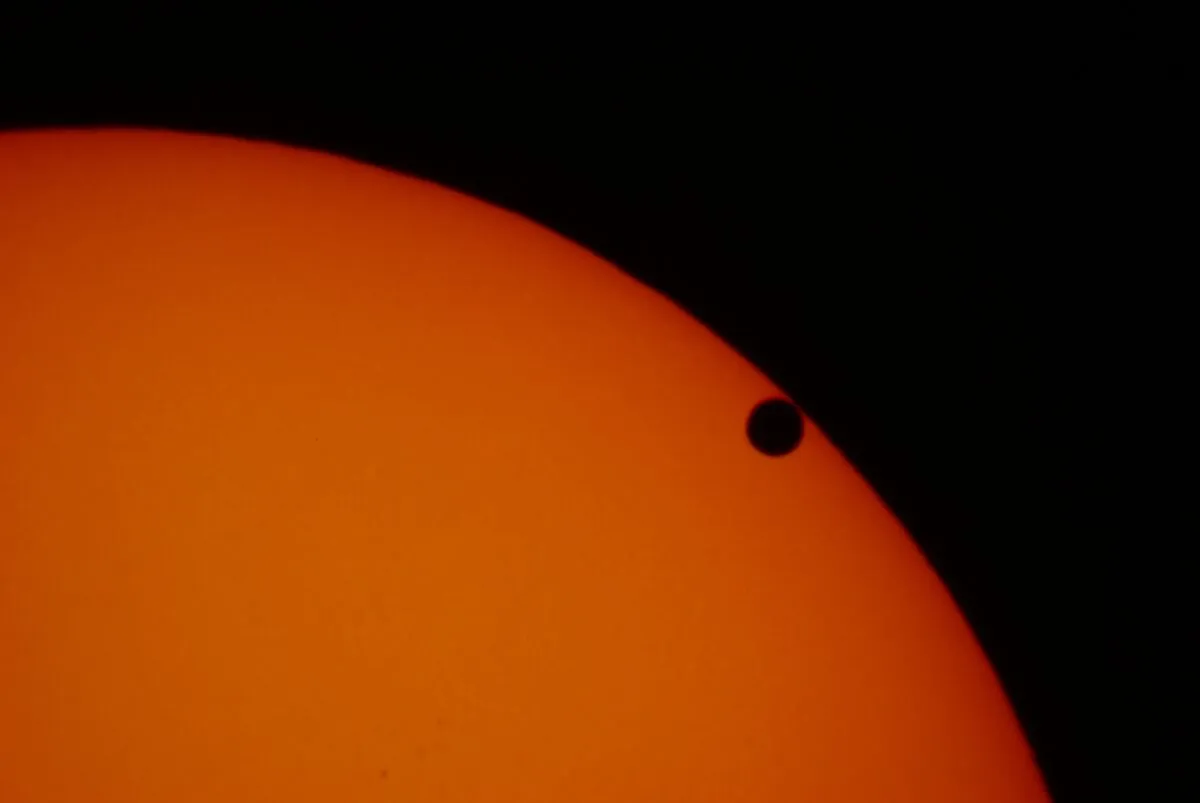Apart from the Sun and the Moon, Venus is the brightest thing in the entire sky. When well placed it can be seen in broad daylight and Venus can even cast shadows.
If Venus is shining really brilliantly it is entertaining to see whether it can cast your shadow.
Remember, Venus is about the same size as Earth and covered by a dense cloudy atmosphere; it is this atmosphere that prevents us from having a clear view of the planet’s surface.
The clouds never clear away – there is no such thing as a sunny day on Venus!
Furthermore, the planet is closer to the Sun than we are and moves more quickly than Earth, so its year is shorter.

We see it best when its angular distance to the Sun is at maximum.
Venus is also the closest planet to us, considerably closer than Mars can ever be.
At its nearest, its distance from us is as little as 39.5 million km, about 100 times as far away as the Moon.
Unfortunately, it is invisible on these occasions because it is practically in front of the Sun.

Venus is an enigmatic world
Mars, Jupiter and Saturn show a great amount of detail when observed through a telescope but Venus does not – its atmosphere hides its surface well.
All you will normally see is a whitish disc but the shape of the disc varies.
When Venus is almost between us and the Sun we cannot see it.
As it moves away, the distance from Earth decreases, the apparent diameter shrinks and Venus becomes less bright.
In fact, it is at its best when only showing a crescent.
If you observe Venus from night to night you will see how the phase alters but I’m afraid you will not see any definite surface markings.

Venus and the Schröter effect
In the late 18th Century a series of observations was made by the German astronomer Johann Schröter, who recorded a curious effect.
It is easy for mathematicians to predict the time of dichotomy, the period that Venus shows a 50% phase, but Schröter found that their estimates were always slightly wrong by two or three days.
I christened this anomaly ‘the Schröter Effect’ and this term is now accepted by all astronomers.
It is certainly caused by Venus’s dense atmosphere.

Schröter also tried to measure the rotation of Venus. With Mars there is no problem: simply watch the dark markings as they are carried across the disc by the axial spin.
Not so with Venus, because the markings are not only ill-defined, they also shift and change. Schröter finally gave the rotation period as almost the same as Earth’s.
We now know that this was very wrong indeed.
The mysterious Ashen light

Then there is the issue of the Ashen Light, which refers to the faint visibility of the part of Venus not illuminated by the Sun.
We see the same thing with the Moon – when the Moon is a crescent the rest of it can be seen very clearly.
There is no mystery here, because the light is simply reflected from Earth. However, Venus has no moon, so the actual cause of the light had to be quite different.
The 19th-Century German astronomer Franz von Paula Gruithuisen believed that the Ashen Light might be caused by artificial illuminations in honour of the ascension of a new emperor.
Later, he suggested that it could be due to the burning of large stretches of jungle to produce new farmland.
Needless to say, not many people believed this.
It was next suggested that the light might be due to electrical storms of the same kind as our aurorae but it now seems likely that what we are seeing is simply light from the surface managing to penetrate the clouds above.
Venus is a hellish world

What is Venus like as a world? For a long time we had absolutely no idea.
Some astronomers regarded Venus as a scorching, lifeless desert, while others thought it might be welcoming and able to support life.
Indeed, Venus was so attractive for observation because it was widely thought that advanced life might exist there. This was not finally cleared up until more recent times.
Venus remained a planet of mystery until the Space Age.
Unmanned spacecraft have been sent there and they have answered many of our questions.
We now know that Venus is not a welcoming world. The surface temperature is unbearably hot during the daytime but drops to far below freezing during the Venusian night.

It was also found that Venus spins very slowly in an east-west direction, taking 243 Earth days to complete one rotation.
The planet takes 224.7 Earth days to orbit the Sun, so technically its ‘day’ is longer than its ‘year’.Venus’s solar day lasts for 117 Earth days.
If you were to stand on the surface and see through the clouds – which is never possible due to the choking atmosphere of carbon dioxide – the Sun would rise in the west and set in the east.
Beneath the clouds, Venus’s surface has high mountains and deep valleys.
It also seems that Venus is still a highly volcanic world.
Thousands of small volcanoes have been identified and activity must be going on all the time.

Venus can be seen transiting the Sun
Because Venus moves around the Sun in an orbit smaller than that of Earth, there are occasions when the three celestial bodies line up.
When this happens we see the planet as a small black disc against the Sun. This is known as a transit of Venus.
Early observers were irritated that when Venus passes onto the Sun’s disc it seems to be followed by a small black patch that does not vanish until Venus is completely on it.
This patch is known as the ‘black drop’.

These transits are not common: two occur separated by eight years, after which there are no more for over a century.
One took place on 5 June 2004, which I watched from my observatory in Selsey.
Transits like this were once valued as they make it possible to work out the distance to the planet. As there are now better methods of determining this, they have lost their importance.
We are now sure that there can be no Earth-type life on Venus as conditions there seem too hostile to support any life of the kind we understand.
However, this does not make the planet any less interesting; it may well be regarded as Earth’s twin.
This article originally appeared in the April 2012 issue of BBC Sky at Night Magazine.

